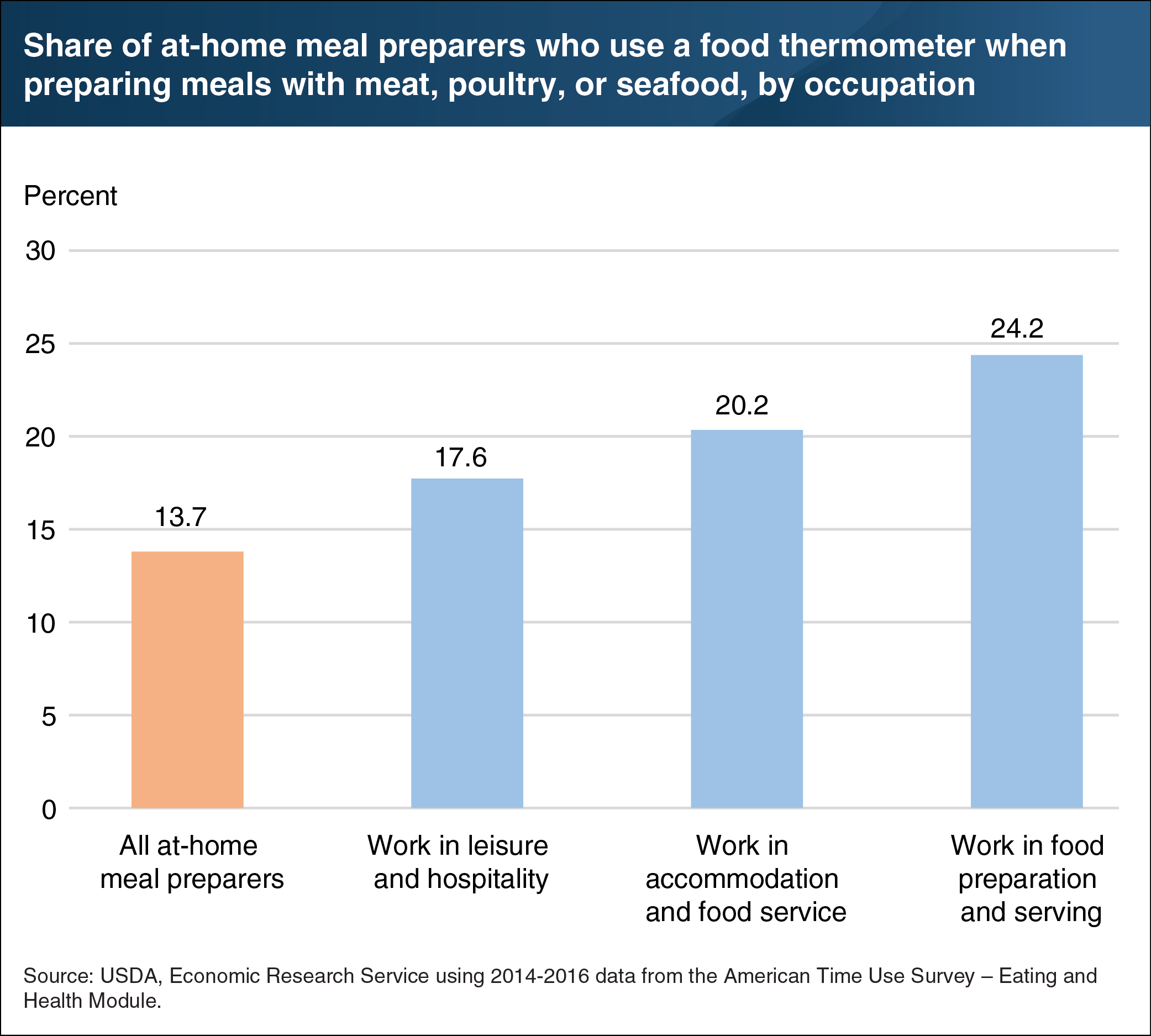Foodservice employees are more likely to use a food thermometer at home
- by M. Taylor Rhodes and Fred Kuchler
- 5/22/2019

Public health officials recommend using food thermometers when cooking meat, poultry, and seafood to verify that the food is adequately cooked and that disease-causing pathogens, which could be in the food, are destroyed. Using data from the American Time Use Survey’s Eating and Health Module, ERS researchers found that 13.7 percent of at-home meal preparers used a food thermometer when preparing any meals with meat, poultry, or seafood during a typical week in 2014 to 2016. ERS researchers further examined whether at-home meal preparers with occupations related to food preparation were more likely to use a food thermometer. For at-home meal preparers who worked in the leisure and hospitality industry, 17.6 percent used food thermometers at home. Just over 20 percent of those who worked in the accommodation and foodservice industry, and 24.2 percent of those who worked in food preparation and serving occupations reported using food thermometers at home. These estimates exceed the national average, suggesting the training that foodservice employees receive for work partially carries over to behavior at home. This chart appears in the article, “Not All Consumers Are Following Food Safety Advice From Health Officials” in ERS’s Amber Waves magazine, April 2019.

